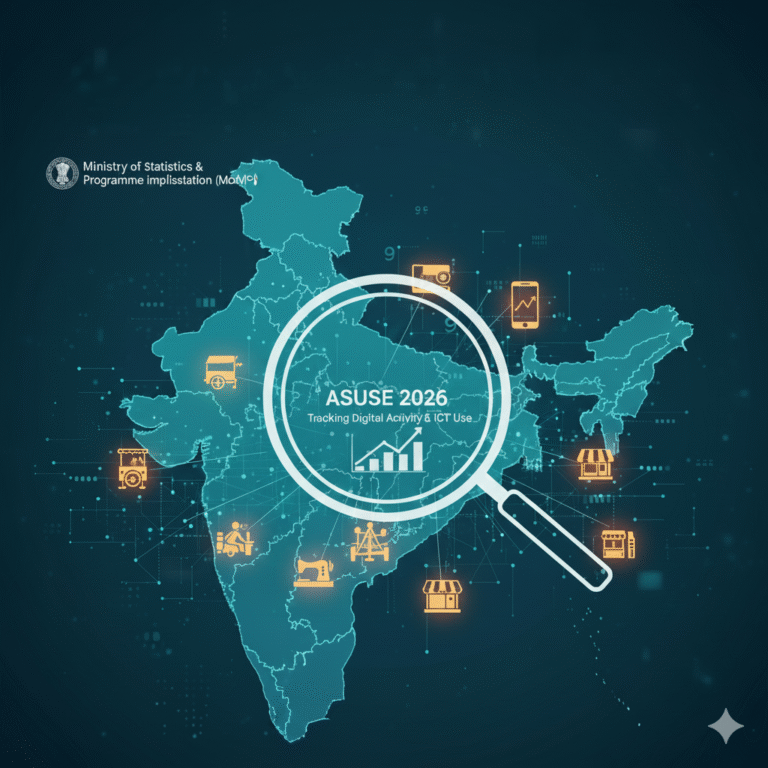The Indian information technology industry—long the world’s back-office powerhouse—has hit a major inflection point. Tata Consultancy Services (TCS), India’s largest IT services company, is laying off 12,000 employees over the next two years, primarily at the mid- and senior-level. This move, unprecedented in both scope and context, does not stem from an AI productivity “culling” but from a deeper structural reset: the traditional era of “body-count” deployment is giving way to outcomes driven by specialized skills, agility, and product-centricity. TOI MoneyControl
TCS may be in the headlines, but this is a sector-wide wake-up call. Here’s what’s really happening, why it matters, and what it means for the future of IT work in India.
What’s Happening at TCS?
- 12,000 layoffs announced through FY26—about 2% of its global workforce.
- Focus: Not entry-level, but experienced, mid- and senior-level staff.
- Not “just AI”—it’s about skills: The company says these layoffs are not due to automation or AI replacing people, but a growing mismatch in existing skills versus what new, product-based models demand.
- Failure to redeploy: Many impacted personnel could not transition into new roles amidst the company’s rapid shift toward product management, platform building, and digital solutions.
Why Does This Signal a Sectoral Reset?
1. The End of Headcount-Led Growth

For over two decades, India’s IT sector scaled on a simple model: win large deals, add “resources,” bill globally. Mass hiring and linear scaling were rewarded, and the industry became India’s largest private employer.
But that model is breaking down:
- Clients want measurable outcomes, not just resource numbers.
- Tech is evolving faster than retraining cycles.
- Product-led, automated, and agile delivery models are now the gold standard.
2. Specialized Skills > Generic Staffing
- AI, cloud, cyber, data science, platform engineering, and UX are now the core domains in demand.
- Traditional skills—such as legacy application maintenance, manual testing, or generic programming—no longer guarantee job security.
- Adaptability and learning agility are as prized as decades of experience.
3. Middle Management Squeeze
- Many layoffs target those in purely supervisory or “process manager” roles—positions less essential in flatter, self-managing, product-aligned teams.
- Lower demand for layers of project management and gatekeeping, as teams become cross-functional and product-driven.
What’s Really Behind the “Skill Mismatch”?
- Tech Transition Pace: The velocity of change from waterfall delivery and support to agile, DevOps, SRE (Site Reliability Engineering), and AI-led models has outpaced reskilling tracks.
- Legacy Lock-In: Staff whose expertise lay in client-server architectures, mainframes, or traditional project oversight have struggled to pivot to cloud-native, microservices, and customer experience-led environments.
- Talent Pipeline Shifts: New hires are often “full-stack ready,” cloud certified, and more adaptable to modern, collaborative workflows.
The Broader Impact: What Does This Mean for Indian IT?
Short-Term Granular Effects
- Employee Anxiety: Worry for mid-career professionals—will experience now be a liability rather than an asset?
- Increased Up-Skilling Demand: Surge in tech bootcamps, certifications, and advanced degree enrolments as professionals rush to stay relevant.
- “Pyramid Restructuring”: Consulting firms now target leaner teams, fewer management layers, and outcome-based delivery.
- Ripple Effects: Other IT majors (Infosys, Wipro, Tech Mahindra, HCL) are expected to soon follow suit, if they haven’t already quietly begun.
Medium to Long-Term Shifts
- Rise of Product-Centric IT: Indian IT firms will build and license platforms, SaaS products, and industry solutions—requiring fewer, but more deeply skilled, staff.
- “Fluid Careers” the norm: Frequent upskilling, multitasking across domains, and lateral moves will be valued over tenure.
- Shift in Offshoring Math: With automation and platforms, cost-arbitrage plays a lesser role; innovation, IP, and product ownership drive growth.
A Quick Look: Traditional vs. New IT Organization Models
| Old-School IT (Body-Count) | New IT (Product/Skill-Driven) |
|---|---|
| “Resource pyramid” hiring | Lean, cross-functional teams |
| Layered management | Flatter, more autonomous groups |
| Outcome secondary to delivery | Outcome-based contracts |
| Generic skillsets | Domain + product specializations |
| Linear scaling (revenue:headcount) | Non-linear, IP/platform-led growth |
Why “Just AI” Isn’t the Full Story
While AI and automation are accelerating change, TCS’s leadership makes it clear: layoffs are not a “robot apocalypse,” but a human one—a product of radical shifts in how and what IT vendors deliver, and the struggle of thousands to keep up.
- AI automates routine work, but also demands human creativity in prompt engineering, model oversight, governance—even as it eliminates some types of roles.
- Biggest pain? Not entry level, but for those unable to re-align to the new world, often because “process skills” no longer map neatly onto modern workflows.
Reader Takeaways: How to Survive and Thrive
For IT professionals—or those aspiring to join the field—these lessons are clear:
- Relentless, lifelong learning is non-negotiable.
Cloud, AI/ML, cybersecurity, full stack, product management—pick a lane, upskill, and keep moving. - Embrace “T-shaped” skills: Depth in one area, broad adaptability across related fields.
- Be outcome-focused: Not just what you do, but what value you deliver.
- Practice agility: Willingness to change roles, teams, even core domain as needed.
- Build people and product skills: Soft skills, design thinking, customer empathy—these can’t be automated.
Industry Voices: What Leaders and Analysts Say
- “This is the end of the ‘bench’ and ‘body-shopping’ era that made India an IT giant. From now, value comes from new ideas, not raw numbers.”
— Senior industry analyst, Nasscom - “Mid-career workers must now become mid-career learners—or risk being left behind.”
— CTO, leading SaaS provider - “Indian IT isn’t shrinking—it’s evolving to better fit global needs.”
— HR head, multinational IT firm
Conclusion
TCS’s workforce shake-up is not just “another round of IT layoffs”—it is the strongest signal yet that Indian tech is undergoing a long overdue transformation. Manpower alone is no longer a business model; the winners in Indian IT’s next act will be those who invest in relentless learning, tech-first thinking, and real, product-driven value. For professionals, the time to upskill and reinvent is now. For Indian IT as an industry, the era of “body count” is over—the era of smart, skilled, adaptive teams is finally here.









+ There are no comments
Add yours